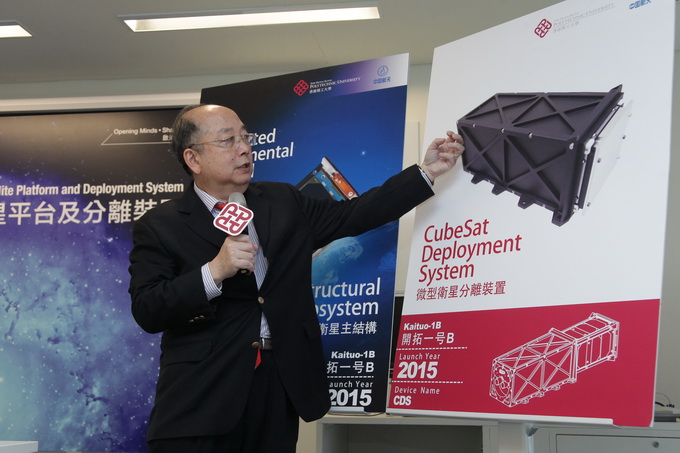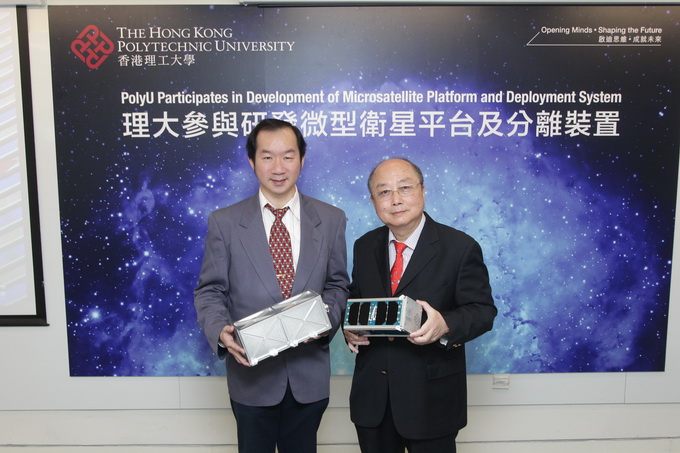

On 20 September 2015, China successfully launched the “20 satellites in one rocket” of Long March 6. In this historical mission, PolyU has jointly developed a microsatellite platform and a deployment system with Aerospace Dongfanghong Development Ltd, Shenzhen, China.
Led by Prof. Yung Kai-leung, Associate Head of the Department of Industrial and Systems Engineering, a research team designed the microsatellite platform and deployment system which were installed in the “Kaituo-1B” microsatellite. Being the first such space device developed by Hong Kong, the invention has advantages including low-cost, light-weight, easy-to-assemble, simple-to-manufacture, reusable in ground tests and spaceflight proven.
On the day of the rocket launch, “Kaituo-1B” piggybacked on its mother satellite “Kaituo-1A” and was separated at 500 km altitude to perform a series of verification tests and experiments in space. Among those experiments was the “Integrated Experimental Payload” designed by Dr Cheng Ching-hsiang, Assistant Professor of the Department of Industrial and Systems Engineering and his team. The objective was to monitor ground images, space particles and chamber environment. The designed life span of “Kaituo-1B” is three months. It is expected that “Kaituo-1B” will de-orbit eight years later and return to the atmosphere without creating any space debris.
The success of “Kaituo-1B” with PolyU-developed microsatellite technology will simplify the procedures and reduce the costs of future space research experiments. The technology will bring benefits to a wide range of disciplines, including the aviation, pharmaceutical and advanced material industries as well as the education sector. Details>>